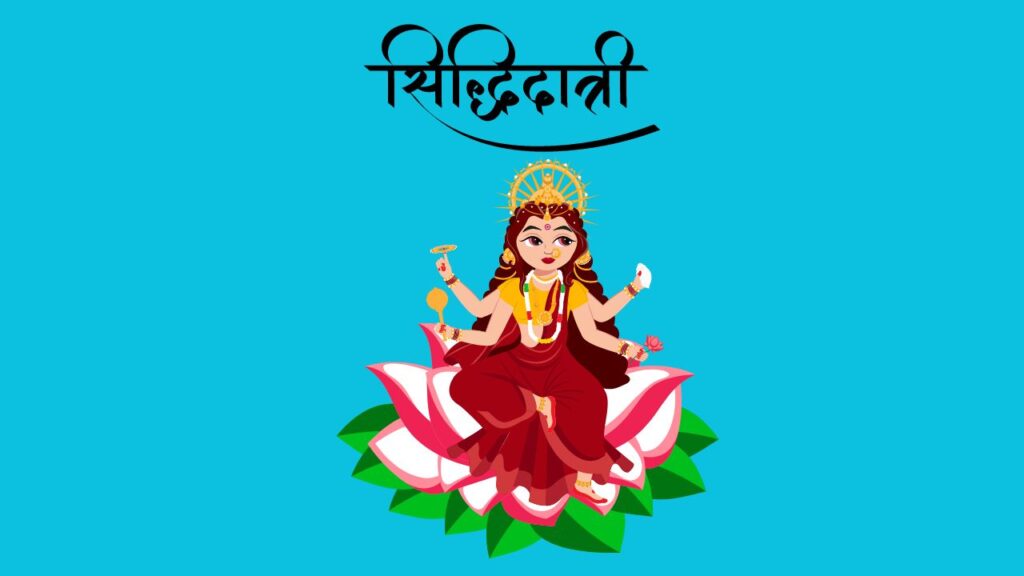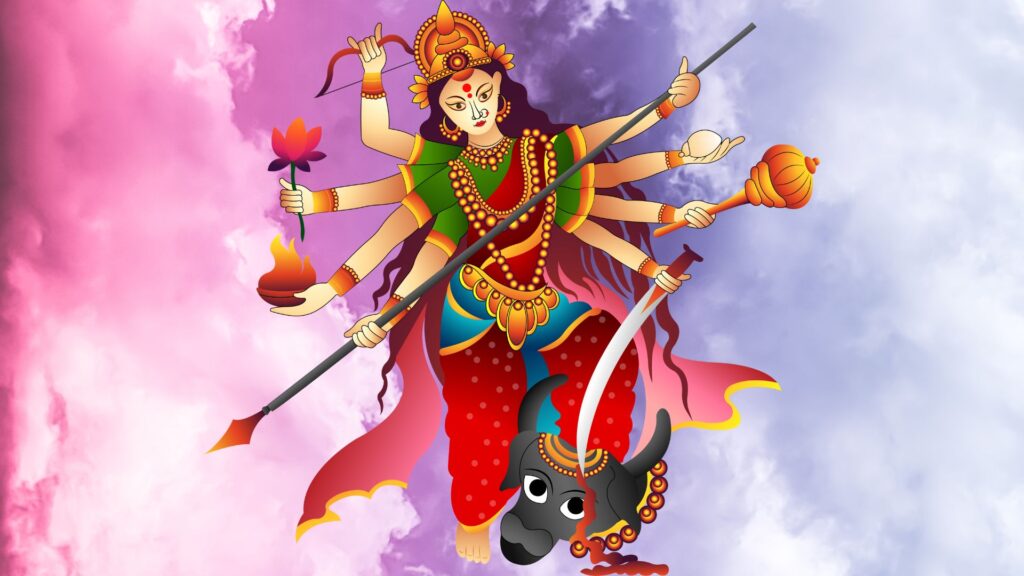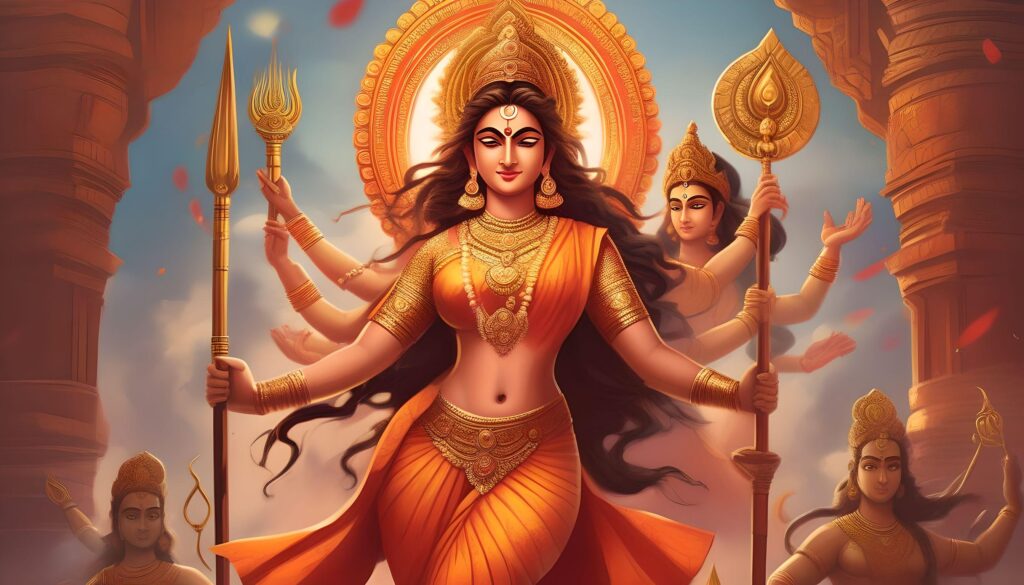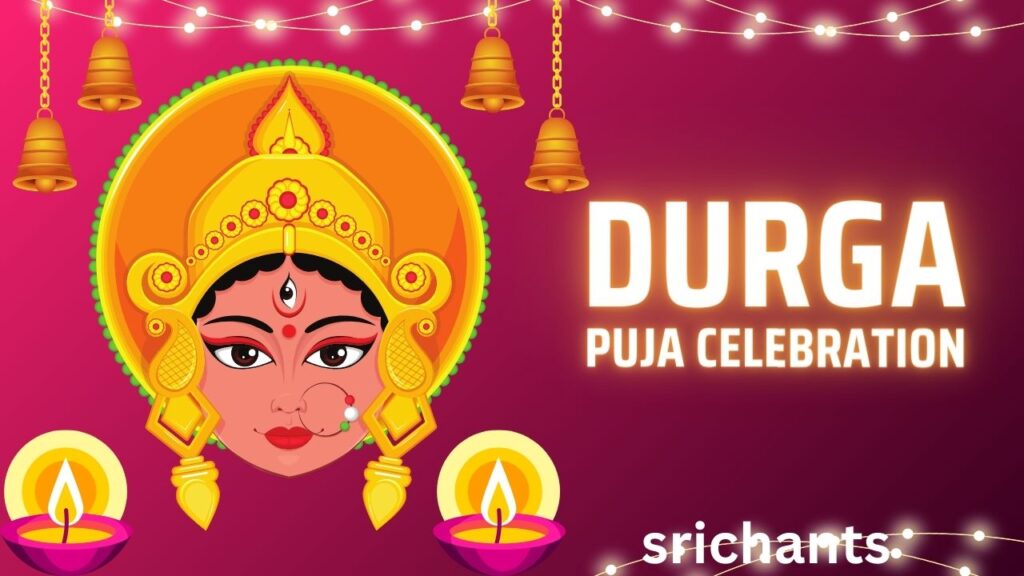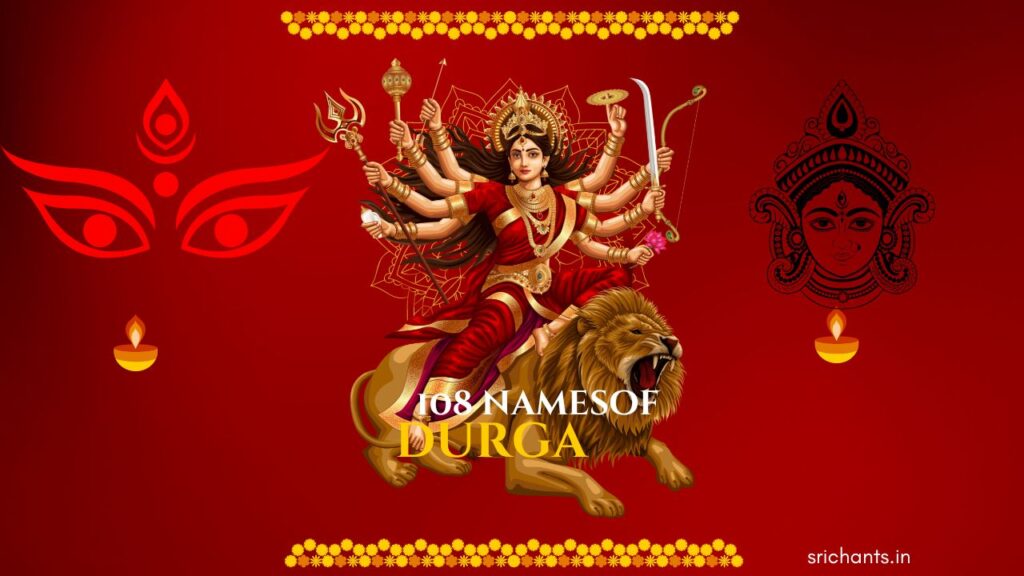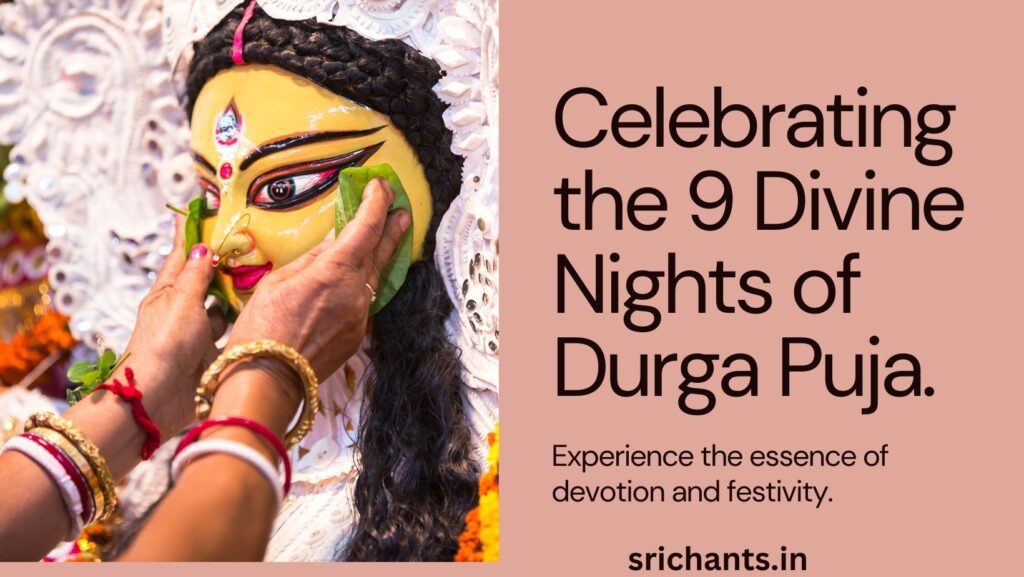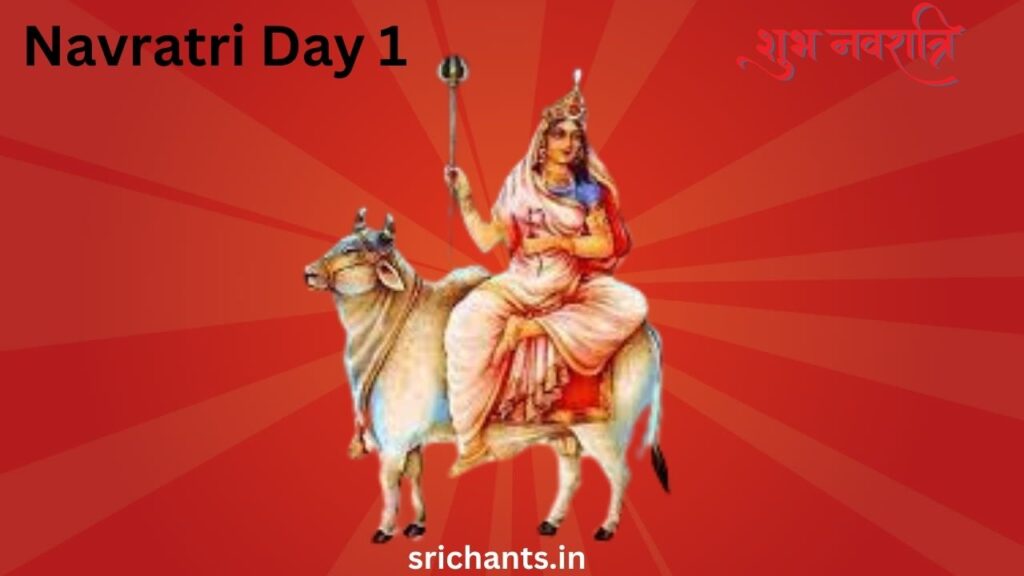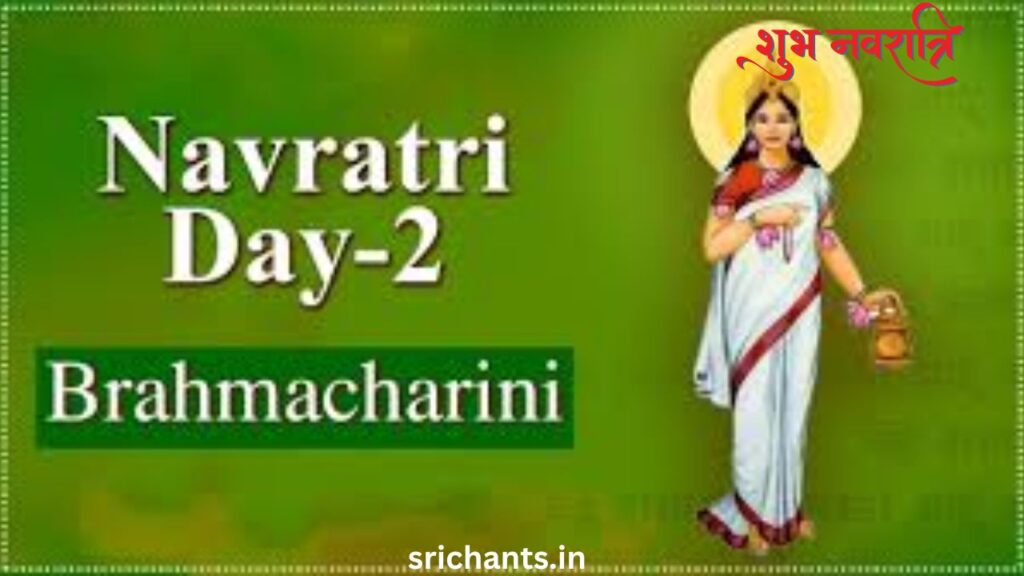Navratri Day 9 : Maa Siddhidatri: Celebrating the Culmination of Navratri
Introduction
Devotees throughout the nation anticipate the advent of the revered Goddess Siddhidatri as the auspicious Navratri festival approaches its climactic ninth day. This embodiment of the divine feminine energy is held in high regard for her capacity to bestow unparalleled spiritual accomplishments and blessings upon her devoted devotees. During the spring season, the Chaitra Navratri is commemorated with a special significance, as it symbolizes the triumph of good over evil and the rejuvenation of the cosmic order.
The Emergence of Maa Siddhidatri
A dazzling, radiant light emerged in the primordial void that preceded the creation of the universe, dispelling the darkness and signaling the beginning of a new era. The triumvirate of deities, Brahma, Vishnu, and Shiva, was established by the primordial energy, Adi Parashakti, which manifested as the divine Goddess Mahashakti. The responsibilities of creation, preservation, and destruction were assigned to these three cosmic forces, accordingly.
During this period, Lord Shiva participated in rigorous penance in order to appease the Goddess and achieve the highest spiritual powers. Adi Parashakti, in gratitude for his devotion, manifested as the Goddess Siddhidatri, emerging from the left side of Lord Shiva. This union transformed him into the androgynous Ardhanarishwar, a deity who embodies both the masculine and feminine principles.
The Significance of Maa Siddhidatri
Maa Siddhidatri, the giver of all Siddhis (supernatural powers), is renowned for her capacity to bestow the eight fundamental Siddhis: Anima, Mahima, Prapti, Prakamya, Garima, Laghima, Ishitva, and Vashitva, upon her devotees. The triumvirate of deities were bestowed these powers, which enabled them to fulfill their respective cosmic responsibilities with unparalleled efficacy.
Additionally, it is believed that Maa Siddhidatri is responsible for the direction and energy of the celestial body of Ketu, which is a powerful planetary force that extends beyond the domain of the divine. Her function as a guiding light is further emphasized by her association with Ketu, the node of the moon, which illuminates the path to spiritual enlightenment and self-realization.
The Symbolic Representation of Maa Siddhidatri
Maa Siddhidatri is depicted as a serene and benevolent deity, seated on a lotus throne and riding a majestic lion. The Sudarshan Chakra, the conch shell (Shankha), the mace (Gada), and the lotus flower (Padma) are each held in one of her four limbs, each symbolizing the blessings she bestows upon her devotees and her multifaceted abilities.
The peacock green color, which is associated with Maa Siddhidatri, represents the cessation of ignorance and the acquisition of divine knowledge and wisdom. This vibrant hue also represents the unbounded creativity, prosperity, and individuality that she embodies.
The Navami Puja Rituals and Significance
Devotees throughout India conduct intricate puja rituals to pay tribute to the Goddess Siddhidatri on the ninth day of Navratri, which is referred to as Maha Navami. The day commences with a Mahasnan, a ceremonial bath given to the deities. This is followed by the wearing of new garments and the presentation of seasonal fruits, candies, and other delicacies as bhog (offerings).
The Kanya Pujan, a cherished tradition during Maha Navami, is a ceremony in which nine young females, who represent the nine divine forms of Goddess Durga, are revered and honored. Their feet are washed, and they are presented with special food and gifts, symbolizing the reverence for the feminine divine and the invocation of Maa Siddhidatri’s graces. Additionally, they are adorned with vermilion (kumkum).
The Spiritual Significance of Maa Siddhidatri
Maa Siddhidatri is regarded with reverence for her capacity to remove the veil of ignorance and bestow divine knowledge and wisdom upon her followers. It is believed that she bestows the eight Siddhis upon her devotees, thereby enabling them to achieve spiritual perfection and realize their full potential, through her grace.
Spiritual practices, meditation, and the invocation of the Goddess’s graces are considered particularly auspicious during the Navami Tithi, which is dedicated to Maa Siddhidatri. Devotees perform homas (fire rituals), chant mantras, and engage in rituals to seek her divine intervention and protection against adversities.
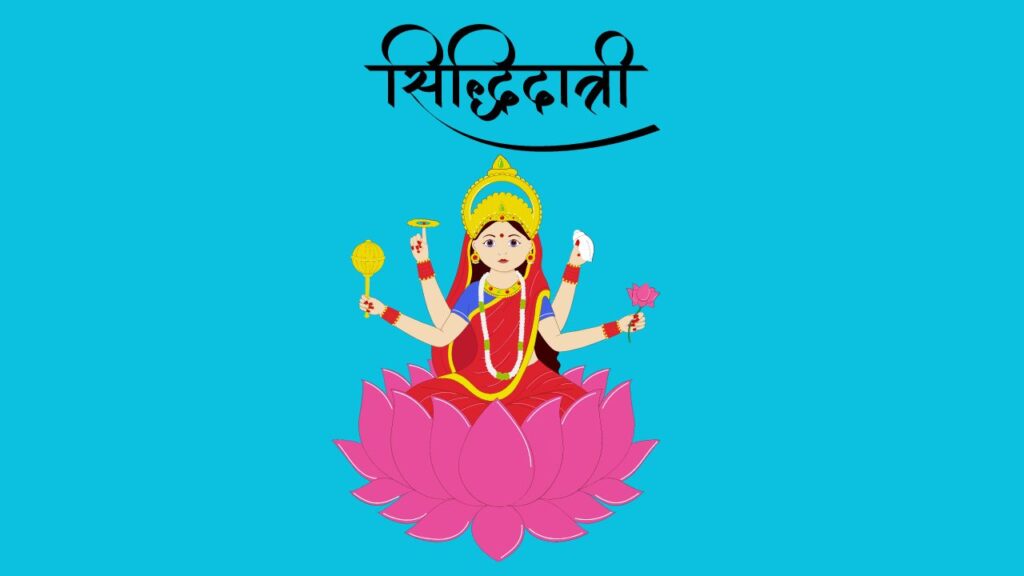
Maa Siddhidatri’s Mantras and Stotras
During the Navami celebrations, devotees recite a diverse selection of stotras and mantras (hymns) to invoke the blessings of Maa Siddhidatri. The following are among the most frequently used:
- Om Devi Siddhidatryai Namah
- Siddha Gandharva Yakshadyairasurairamarairapi, Sevyamana Sada Bhuyat Siddhida Siddhidayini
- Ya Devi Sarvabhuteshu Maa Siddhidatri Rupena Samsthita, Namastasyai Namastasyai Namastasyai Namo Namah
- Kanchanabha Shankhachakragadapadmadhara Mukatojvalo, Smeramukhi Shivapatni Siddhidatri Namoastute
These potent invocations implore the Goddess to grant her devotees spiritual accomplishments and the eradication of ignorance, in order to obtain her graces.
The Prasad and Offerings to Maa Siddhidatri
Devotees present a diverse array of exquisite prasad (offerings) to Maa Siddhidatri on the auspicious day of Maha Navami. Included in this category are seasonal fruits, kheer (a sweet rice cereal), puri (deep-fried bread), chana (chickpeas), coconut, and halwa (a sweet confection).
The selection of these offerings is not arbitrary, as each item possesses profound symbolic significance. For example, the coconut symbolizes the eradication of one’s ego, while the chana represents the cultivation of virtues and the attainment of spiritual enlightenment. The Goddess’s nurturing and compassionate nature is believed to be embodied by the velvety and nourishing qualities of the kheer.
The Aarti and Stotra Recitation
Upon the conclusion of the Navami Puja rituals, devotees chant the Maa Siddhidatri Aarti, a devotional song that invokes the Goddess’s blessings and praises her. The aarti lyrics are infused with reverence and gratitude, recognizing her status as the protector of her devotees and the bestower of all Siddhis.
Besides the aarti, devotees also recite stotras (hymns) that praise the divine attributes and virtues of Maa Siddhidatri. The Goddess’s grace is invoked and the devotees’ connection with her is strengthened by these sacred verses, which have been handed down through generations.
The Significance of Maha Navami
The Hindu tradition places great importance on Maha Navami, the ninth and concluding day of Navratri. It symbolizes the triumph of good over evil and the restoration of cosmic balance, as it commemorates the victory of Goddess Durga over the formidable demon Mahishasura.
Devotees seek the blessings of Maa Siddhidatri, the embodiment of spiritual power and enlightenment, on this auspicious day. They aspire to achieve spiritual fulfillment, surmount adversities, and attain the eight Siddhis by honoring the Goddess and participating in rituals.
The Global Celebration of Navratri
The Navratri festival is celebrated with fervor worldwide, transcending geographical boundaries. The reverence for the divine feminine energy is a unifying thread that unites the global Hindu community, from the stately Durga Puja festivities in West Bengal to the vibrant Garba dances in Gujarat.
Devotees from all aspects of life convene to honor the Goddess Siddhidatri as the Chaitra Navratri concludes with the Maha Navami celebrations, in order to seek her blessings and guidance on their spiritual journeys. The Hindu faith’s profound significance and timeless wisdom are underscored by the universal appeal of this festival.
Conclusion
The ninth day of Navratri, which is dedicated to the veneration of Maa Siddhidatri, is a testament to the enduring power of the divine feminine. Devotees strive to achieve spiritual perfection, surmount adversities, and unleash the boundless potential that resides within through her grace. The devotees send farewell to the Goddess as the Chaitra Navratri festival draws to a close, with the faith that her blessings will continue to guide and protect them throughout the year.
#siddhidatri #maasiddhidatri #coloursfornavratri #navaratricolors #navratriday9
